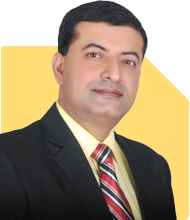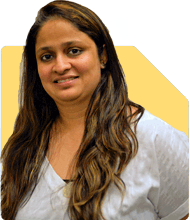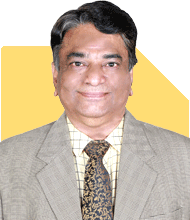Shekhar Kumar | Answer |Ask -Follow
Leadership, HR Expert - Answered on Apr 29, 2024
He has also mentored middle and senior management professionals for leadership positions and guided them in career development.
Shekhar has a bachelor's degree in business management from Magadh University, Bihar, and a master's degree in human resource management from Annamalai University, Tamil Nadu.... more

I am working as Branch Manager in Bank. My nature is more talkative and also due to my job many customers are meeting me. This fact increases my talkative nature and due to this though customer is satisfying my working time get reduced and I can't do my office work. Please advice about how to overcome this.
Consider participating in workshops, seminars, or training programs focused on time management, communication skills, and customer service excellence. Develop strategies and techniques to enhance your effectiveness in managing customer interactions and office responsibilities.
By implementing these strategies and techniques, you can strike a balance between providing excellent customer service and fulfilling your office duties effectively. Remember that managing talkativeness is a skill that can be honed over time with practice, self-discipline, and a proactive approach to improving your work habits.
You may like to see similar questions and answers below
Khevna Shah | Answer |Ask -Follow
HR Expert - Answered on Apr 10, 2023
Maxim Emmanuel | Answer |Ask -Follow
Soft Skills Trainer - Answered on Aug 03, 2024
Anu Krishna |1639 Answers |Ask -Follow
Relationships Expert, Mind Coach - Answered on Aug 06, 2024
Nayagam P P |8385 Answers |Ask -Follow
Career Counsellor - Answered on Jul 09, 2025
Nayagam P P |8385 Answers |Ask -Follow
Career Counsellor - Answered on Jul 09, 2025
Nayagam P P |8385 Answers |Ask -Follow
Career Counsellor - Answered on Jul 09, 2025
Nayagam P P |8385 Answers |Ask -Follow
Career Counsellor - Answered on Jul 09, 2025
Nayagam P P |8385 Answers |Ask -Follow
Career Counsellor - Answered on Jul 09, 2025
Nayagam P P |8385 Answers |Ask -Follow
Career Counsellor - Answered on Jul 09, 2025
Nayagam P P |8385 Answers |Ask -Follow
Career Counsellor - Answered on Jul 09, 2025
Nayagam P P |8385 Answers |Ask -Follow
Career Counsellor - Answered on Jul 09, 2025
Nayagam P P |8385 Answers |Ask -Follow
Career Counsellor - Answered on Jul 09, 2025
Nayagam P P |8385 Answers |Ask -Follow
Career Counsellor - Answered on Jul 09, 2025




















